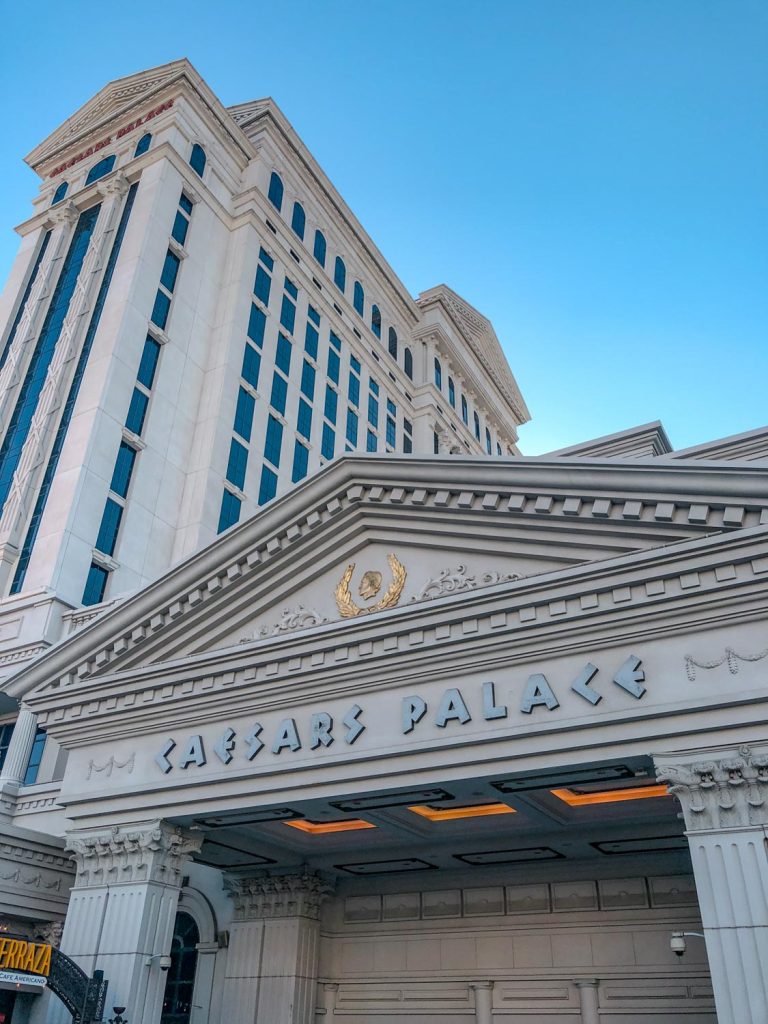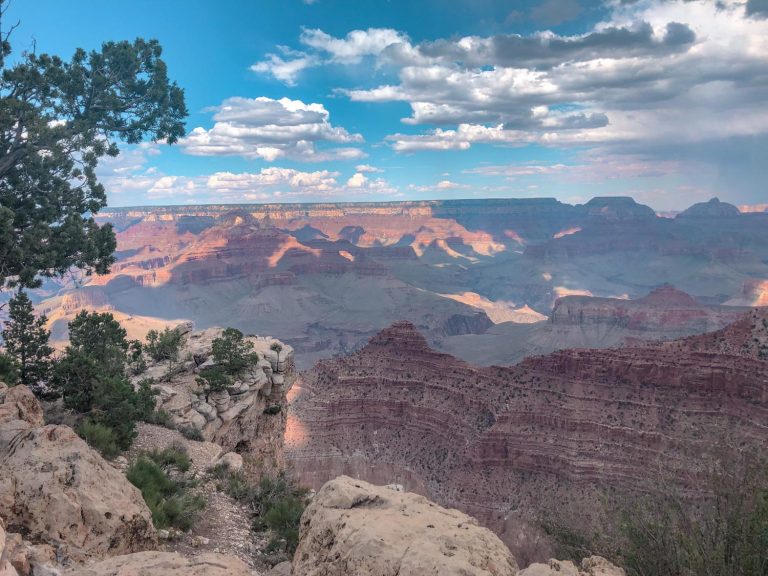Wondering about how to make the most of your Las Vegas to Grand Canyon Road Trip?
A few years ago, we took an epic road trip from Las Vegas to Grand Canyon South Rim, and it still stands out as one of my favorite adventures. The Grand Canyon is a huge bucket list destination for many people, and if you’re thinking of hitting the open road and watching the scenery shift from the neon lights of Vegas to the rugged, natural wonder of the Canyon, you’re in for a real treat. The drive is part of the adventure, and there are so many great stops along the way that make the Las Vegas to Grand Canyon drive a full experience.
In this post, I’ll walk you through the best road trip route from Las Vegas to the Grand Canyon South Rim, compare the different rims of the Canyon, and share some of the top stops and tips for making the most of the journey.

Plan Your Trip With My Trusted Travel Resources!
– Snag great hotel deals on Booking.com and Expedia.com. I’ve found rates here that beat the hotel’s own site and even Google!
– Book amazing tours hassle-free with Viator.com. Their trusted guides made it easy for me to explore both iconic spots and off-the-beaten path attractions, with exclusive access in cities like Vegas, DC, Northern Virginia, and more.
– Travel smarter with Capital One – My favorite for earning points and saving on flights and hotels. Cards like SavorOne and Capital One Business are a big part of how I travel well on a budget!
Best Time to Visit the Grand Canyon
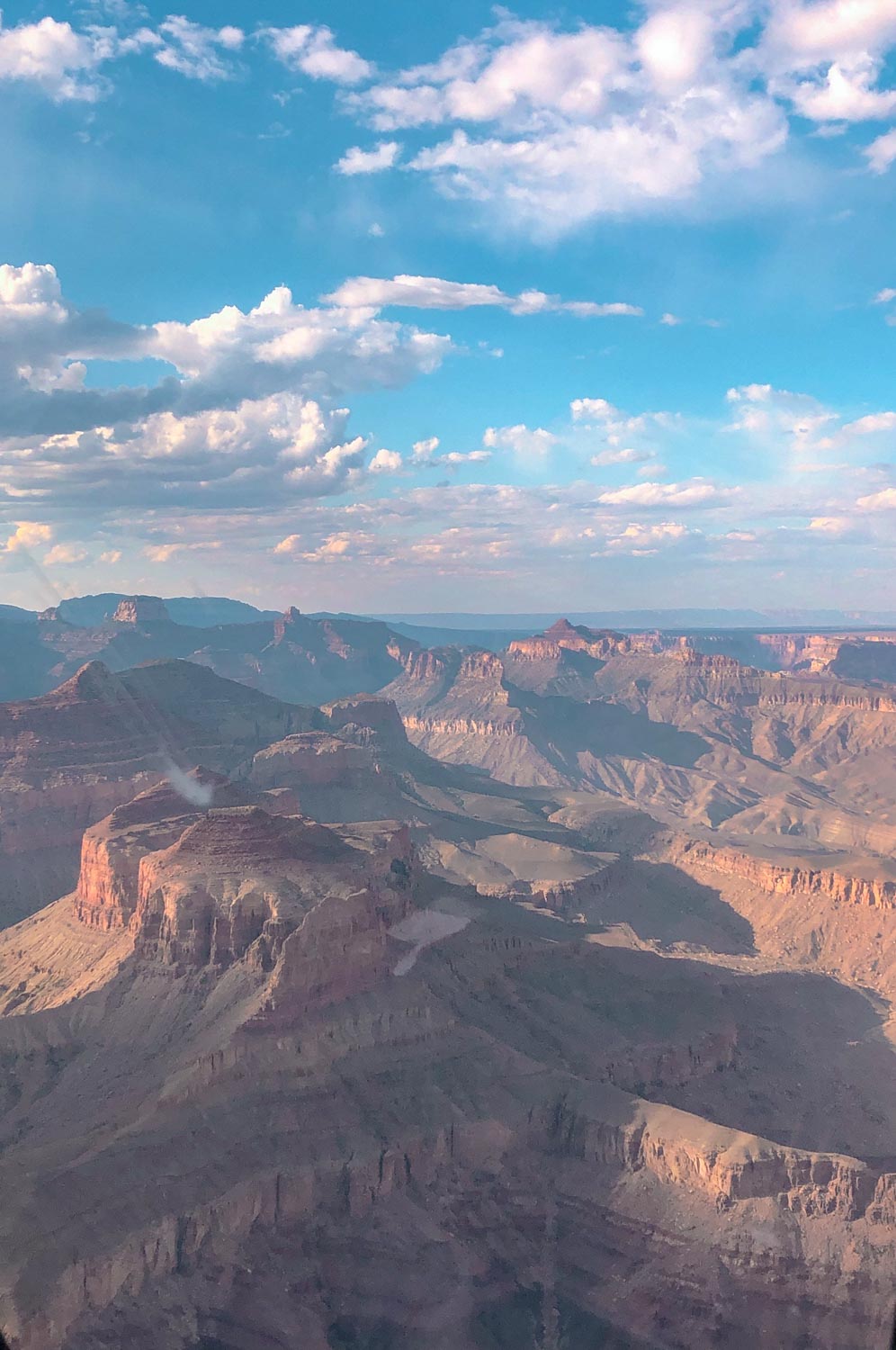
When you go can really shape your experience. Visiting the Grand Canyon in the summertime will have a totally different vibe from visiting the Grand Canyon in the wintertime. Here’s a breakdown of what each season offers, and what to expect:
Spring (March-May)
Spring is one of the best times to visit the Grand Canyon. The temperatures are mild, and the crowds haven’t fully arrived yet, especially if you’re visiting before or after spring break. Springtime is perfect for hiking and sightseeing, without the extreme heat that comes with summer. The weather is absolutely ideal for exploring the South Rim and makes for a pleasant experience.
Summer (June-August)

Summer is the busiest season at the Grand Canyon, and also the hottest. If you don’t mind the crowds and the heat (temperatures can soar above 100°F), summer can be a fun time for taking in the views. We visited in the summertime, closer to August, and while it was hot and a bit crowded, it was still worth it.
Fall (September-November)
This is hands down one of the best times to visit. The weather is still warm but much more comfortable than in the summertime, and the changing leaves look beautiful in the canyon, especially if you’re visiting the North Rim. The crowds start to thin out after September, so you can enjoy the sights without the summer rush. Fall and spring really are the best times for visiting the Grand Canyon.
Winter (December-February)
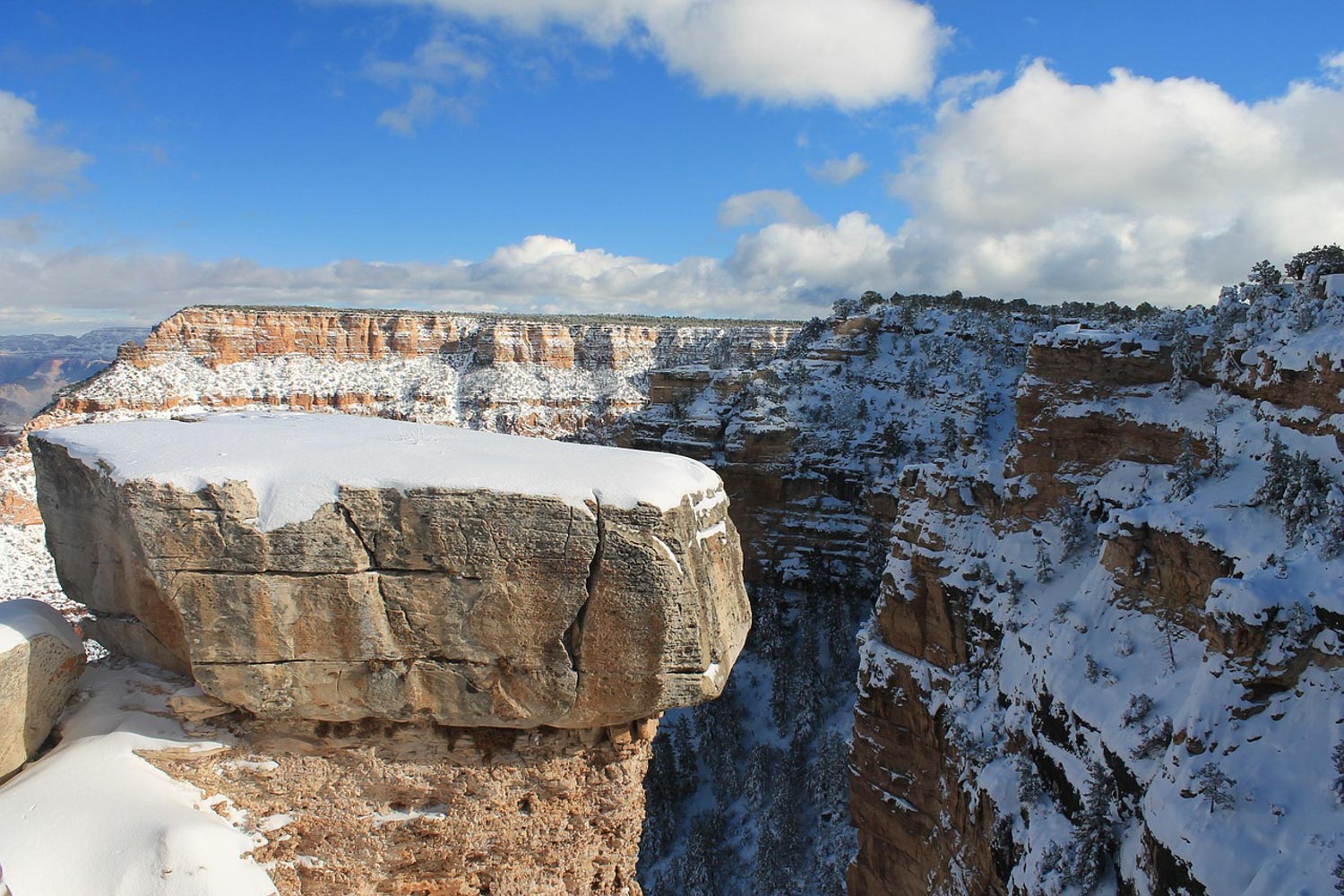
If you’re looking for cooler temperatures and less crowds, winter is a perfect time to visit the Grand Canyon. The South Rim is open year-round and often dusted with snow, making for a beautiful (but chilly) experience. Some trails and services may be limited due to weather but roads are still accessible, except in inclement weather.
How Many Days to Spend in the Grand Canyon

For a road trip from Las Vegas to the Grand Canyon, I recommend setting aside at least two days to truly enjoy the experience, especially if you’re traveling over a weekend. While it’s possible to see a lot of the Canyon in just one day, spending two full days at the South Rim allows you to explore more thoroughly and still have time for scenic stops along the way and nearby. It also gives you a chance to take it all in at a relaxed pace, rather than feeling rushed from one stop to the next.
Which Part of the Grand Canyon Should You Visit?
There are four main areas of the Grand Canyon to choose from when planning your trip. Which one you visit depends on your travel style and what kind of experience you’re looking for, as each section has its own highlights. Here’s a quick breakdown of the four regions and why we ultimately chose to visit the South Rim on our road trip from Las Vegas.
South Rim

Best for: First-time visitors, sweeping and easily accessible views, spacious scenic overlooks, and a wide variety of hiking trails.
Pros: The South Rim offers the most visitor-friendly and scenic viewpoints of all the Grand Canyon’s rims, along with plenty of things to do. You can hike popular trails like Bright Angel and South Kaibab, and check out landmarks like the Desert View Watchtower and Grand Canyon Village. It’s the most developed area, with lots of lodging, food, and ways to learn more about the canyon’s geology.
Cons: It can get pretty crowded, especially during the peak summer months.
Distance from Las Vegas: 280 miles
Driving time from Las Vegas: About 4.5 hours
North Rim
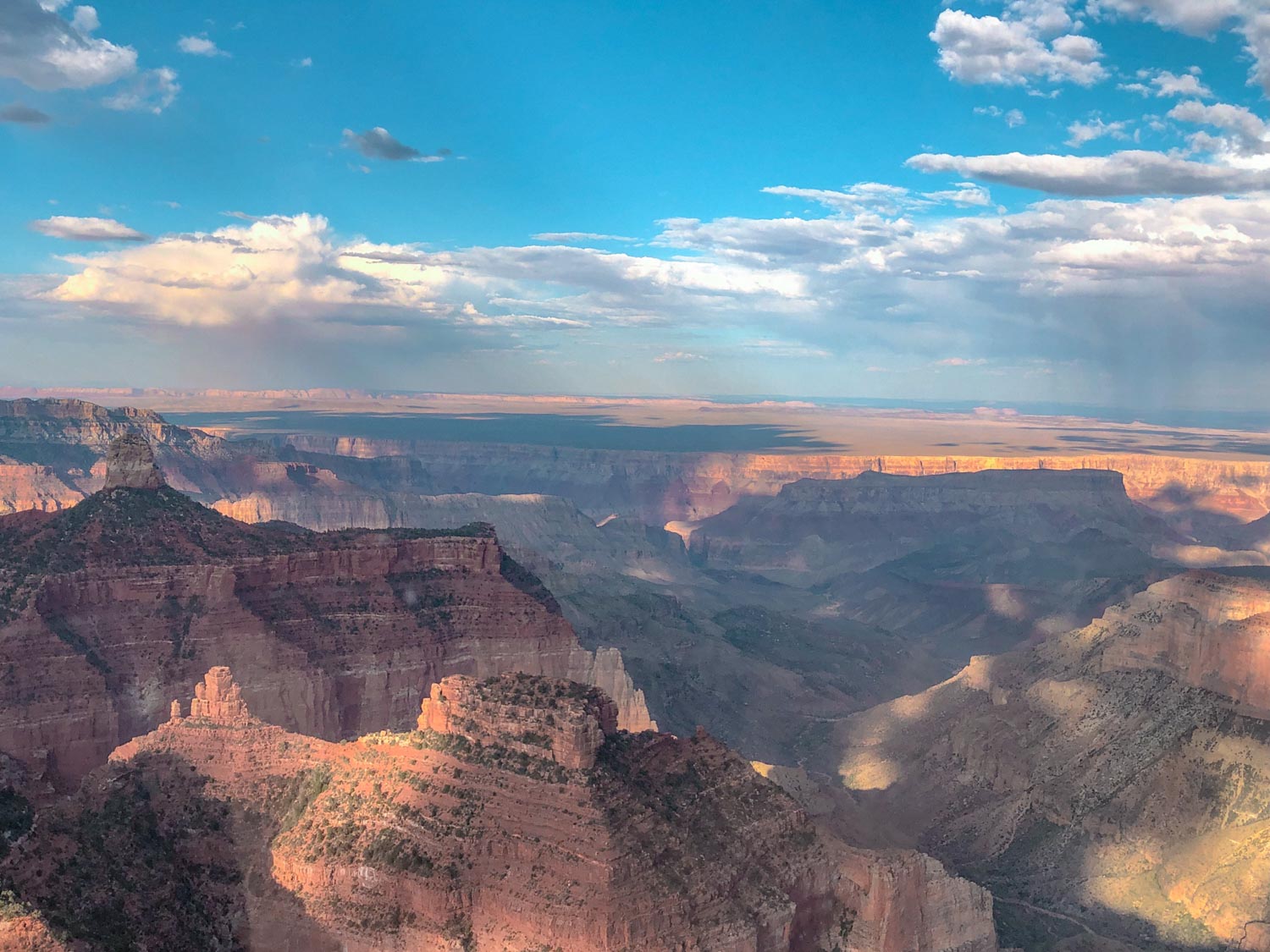
Best for: People looking for a more rugged, authentic experience of the canyon with fewer crowds.
Pros: The North Rim is less developed, offering a quieter, more rugged atmosphere. Temperatures here are cooler, and thanks to the higher elevation, you’ll get beautiful forested surroundings which are quite a contrast to the dry desert landscape of the South Rim. The views from this side of the canyon are unique and often feel more untouched.
Cons: It’s only open seasonally from May 15th to October 15th, and it’s farther from Las Vegas, requiring more travel time. During the winter, parts of the North Rim close due to snow and icy roads, which can make access difficult or impossible.
Distance from Las Vegas: 400 miles
Driving time from Las Vegas: About 5.5 hours
West Rim
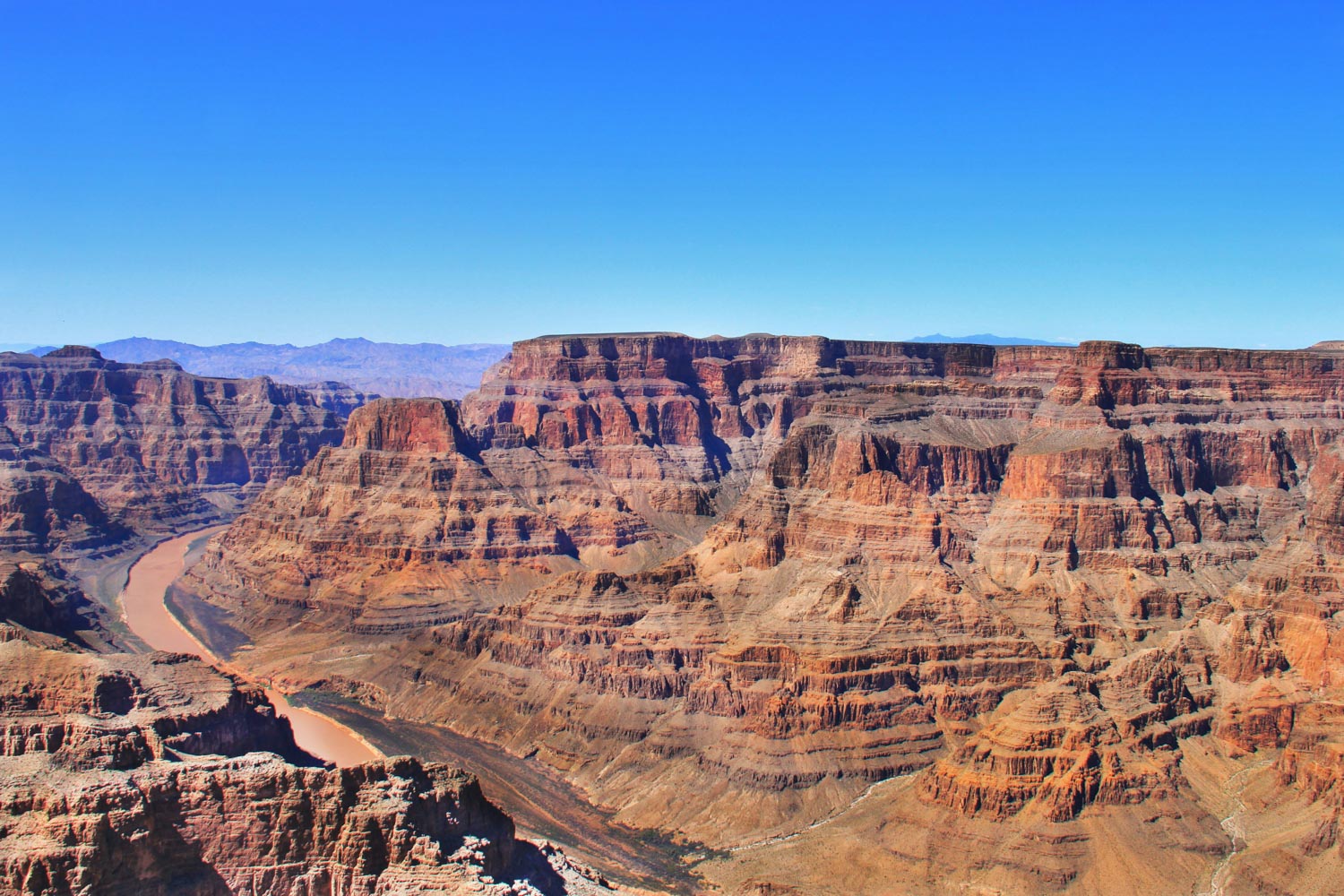
Best for: Short visits and travelers looking for a one-of-a-kind experience (like the iconic glass Skywalk).
Pros: The West Rim is home to the famous Grand Canyon Skywalk, a glass bridge that lets you walk out over the edge of the canyon. It’s the closest rim to Las Vegas, making it ideal for a day trip (see my best day trips from Las Vegas for more ideas). Plus, it’s a great place to support and purchase goods from the Hualapai Tribe, who manage the area.
Cons: Because it’s not part of the National Park, the West Rim lacks some of the untouched beauty and hiking opportunities you’ll find at the South Rim. Some visitors say it feels more commercialized, but the views are still incredible.
Distance from Las Vegas: 130 miles
Driving time from Las Vegas: About 2 hours
You can visit the West Rim through a Las Vegas to Grand Canyon bus tour!
East Region
Best for: Scenic drives and travelers looking for a quieter, more remote Grand Canyon experience. This part of the canyon gets fewer tourists than the other rims and offers access to boat tours, helicopter rides, fishing, and rafting.
Pros: The East Region offers stunning, peaceful views—especially from Desert View. It’s also home to several iconic Southwest landmarks, like Antelope Canyon, Horseshoe Bend, Lake Powell, and Marble Canyon. It’s easily accessible from the South Rim and makes a great addition to any Grand Canyon road trip.
Cons: The East Rim has limited access points and is a bit of a trek for day-trippers. There are two main viewpoints: one is free but lacks safety guardrails, while the other charges a small fee to the Navajo Nation for entry.
Distance from Las Vegas: 250 miles
Driving time from Las Vegas: About 4 hours
Why We Chose South Rim
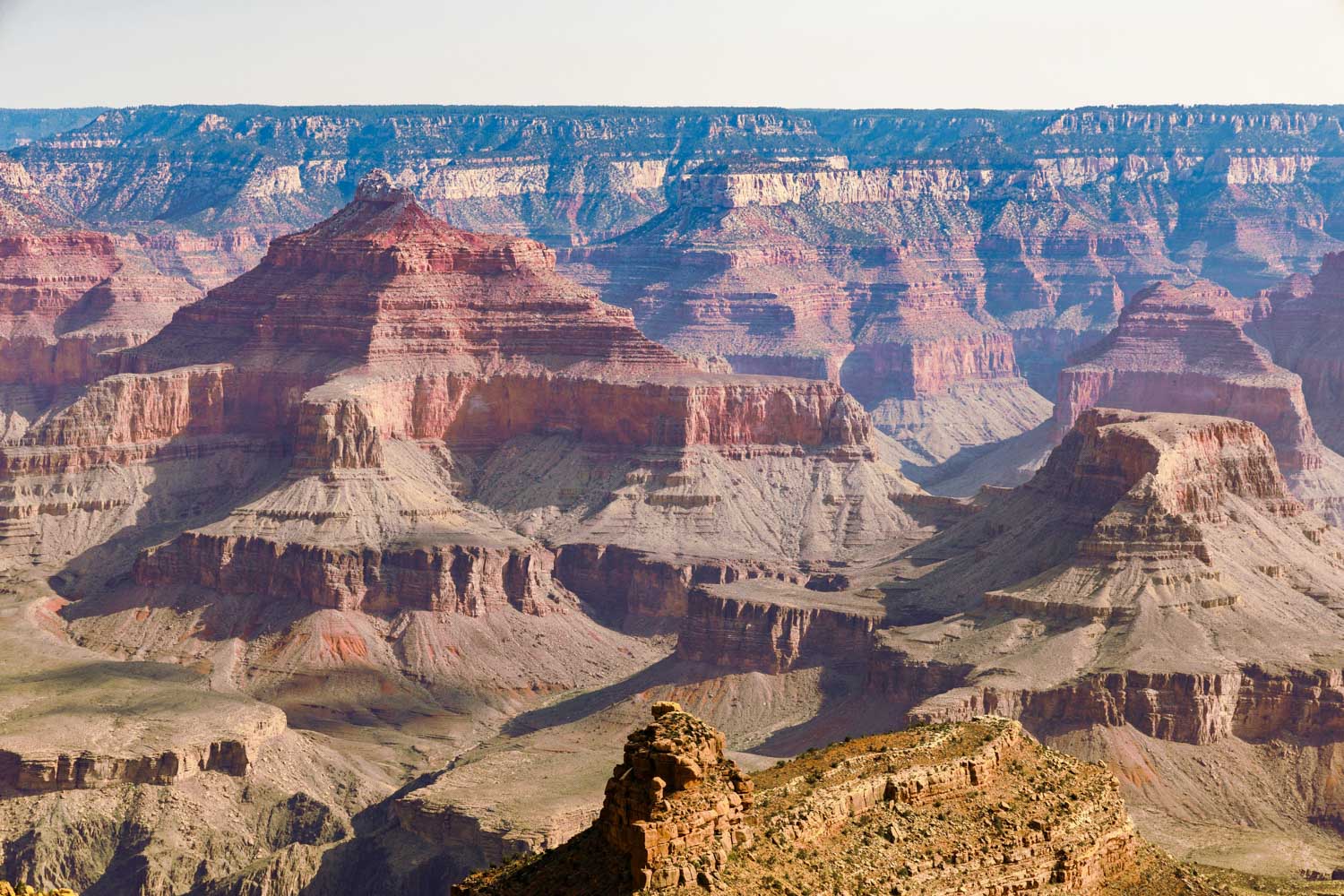
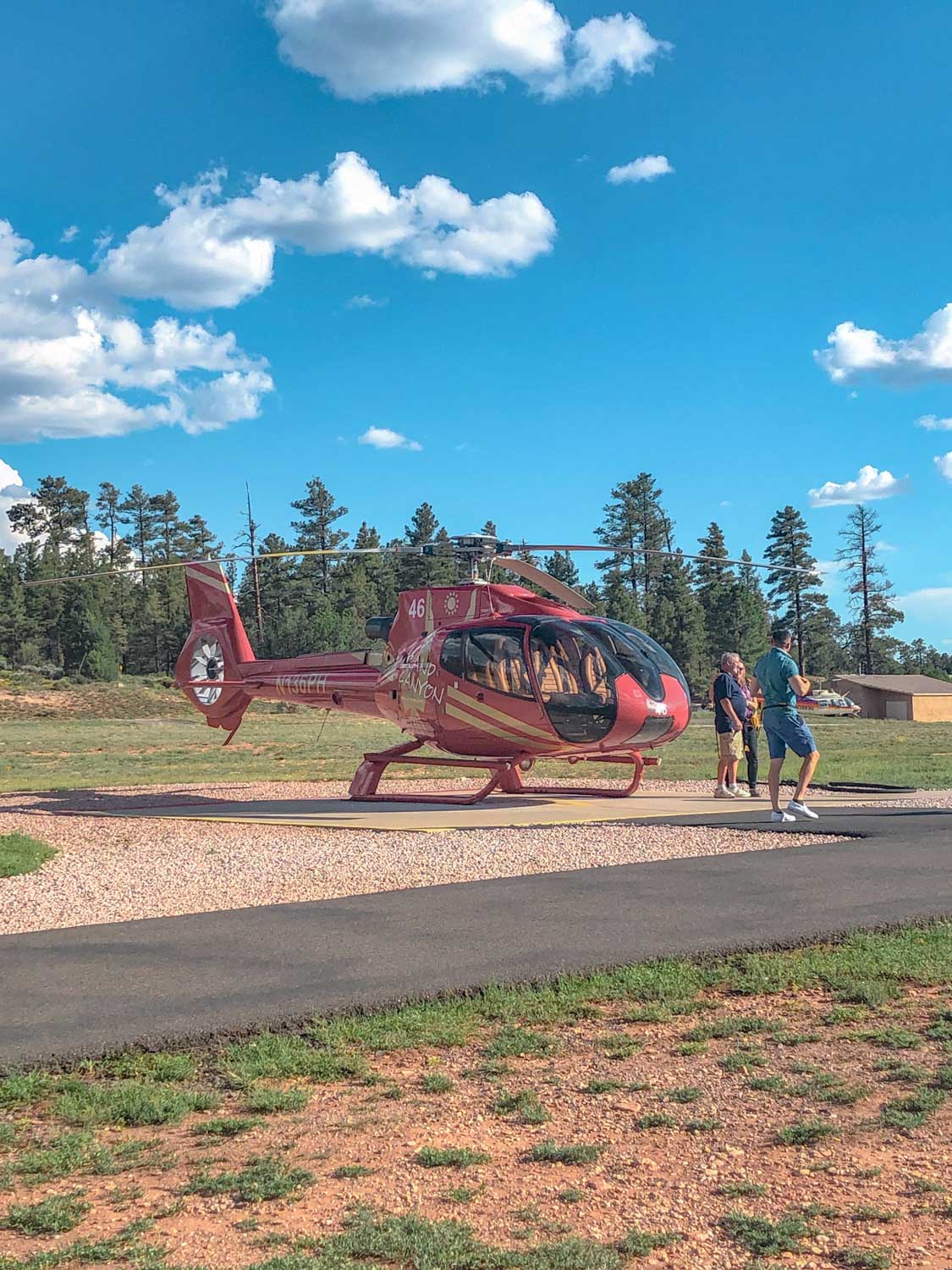
We chose the South Rim because, hands down, it’s the best option for first-time visitors. It’s more developed, with plenty of scenic overlooks, hiking trails, visitor services, and cool activities like helicopter rides and exploring the Grand Canyon Village. It gave us the perfect introduction to the canyon. The drive from Las Vegas felt adventurous but not too long, and we loved the quirky roadside stops along the way like alien-themed gas stations and spiritual gift shops.
South Rim Road Trip Route Options
There are several ways to drive from Las Vegas to the South Rim, depending on how much time you want to spend on the road and the kind of road trip experience you’re after. Below are a few great options to help you reach the Grand Canyon South Rim in a scenic and memorable way!
Option 1: Scenic Route (Hoover Dam & Route 66 Detour)

This route is all about the journey, with iconic stops like the Hoover Dam and classic Route 66 towns such as Seligman and Oatman. It adds about an hour to your total travel time (bringing it to roughly 5 to 6 hours, depending on stops), but it’s worth it if you’re looking to enjoy the ride and soak in some roadside Americana. Typically, you’ll follow US93 to Kingman, then take AZ-66 East toward Seligman and head north through Williams, Arizona, instead of sticking to I-40 the entire way.
Just remember that Nevada observes daylight saving time, while Arizona does not, so if you’re traveling during those months, plan your timing accordingly. Be sure to allow time to explore each stop; we spent about 30 minutes at each, which worked well for us, though it depends on your travel style.
Option 2: Fastest Route (I-40 & Route 66)
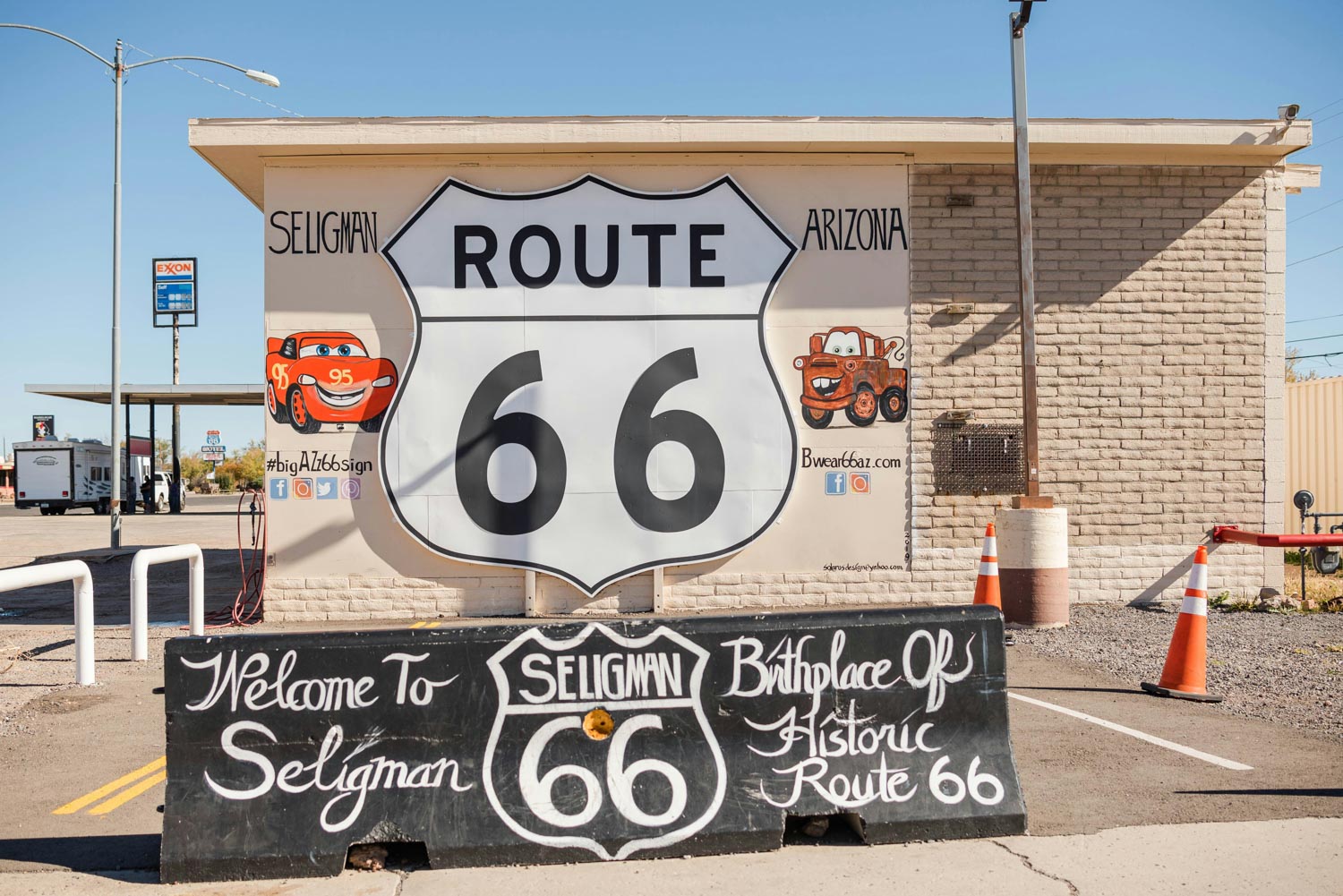
If you’re short on time, this is the quickest option. It’s mostly highway driving, so you’ll get to the Grand Canyon faster, though you’ll miss some of the quirkier attractions along the way.
The route follows US93 to Kingman, then connects to I-40 and continues to Williams, before heading north toward the South Rim. It’s efficient and gets the job done, especially if you’re focused more on the destination than the journey.
Must-See Stops Along the Way
If you’re taking the scenic route via Route 66, or even the faster way through US93, there are a few stops that are definitely worth your time. I highly recommend at least stopping by the Hoover Dam – it’s an iconic destination on its own and makes a great photo op. Here are my top picks:
Hoover Dam
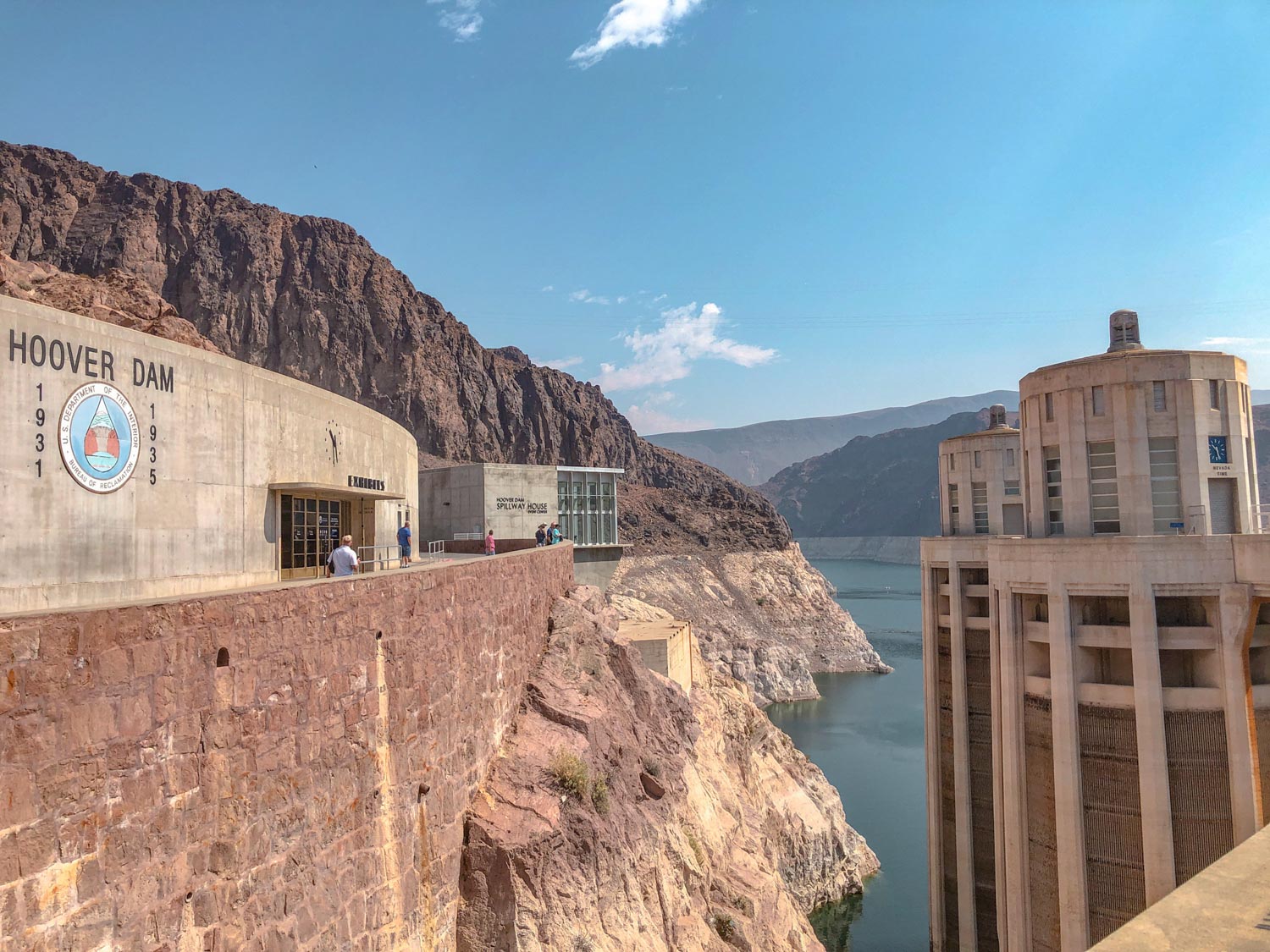
An absolute must-stop on your way to the South Rim! Located just 45 minutes outside of Vegas, the Hoover Dam is perfect for a quick visit. You can walk across the Mike O’Callaghan–Pat Tillman Memorial Bridge to snap some great photos and take in sweeping views of both the dam and Lake Mead. If you’ve got extra time, check out Lake Mead or Emerald Cave, especially if you love nature.
I recommend getting there in the morning before it heats up and the crowds arrive. Parking is fairly easy, but bring water and a hat if you’re traveling in the summer. You can take a tour of the dam, stroll across the top, or enjoy the views from the visitor center. Since it can get really hot, 15 to 30 minutes is usually plenty before continuing on your road trip from Vegas to Grand Canyon.
Emerald Cave
If you’re more into nature than history, consider taking a detour to Emerald Cave along the Colorado River. It’s a small but striking cave where the water glows a vivid green at certain times of day, typically between 12 and 3 p.m., depending on the season. The cave itself is tiny, only fitting about two to three kayaks at a time, but it’s definitely worth a visit if you love hidden gems.
That said, reaching Emerald Cave requires about a 3-hour round-trip by kayak or canoe, so it’s more of a commitment. The water around the cave also has that signature green tint, so if you’re short on time, snapping a few photos from the area is still worthwhile. Just keep in mind that summers can get hot and crowded, so plan accordingly.
Route 66 (Kingman, AZ)

The iconic Route 66 is one of America’s most legendary highways, making it a fantastic detour on your way to the Grand Canyon’s South Rim. Known as the “Mother Road,” this stretch once connected Chicago to Los Angeles and symbolized freedom, westward expansion, and the American Dream. There are plenty of cool stops where you can learn more about its past!
Start your Route 66 adventure in Kingman, AZ, which is home to the Arizona Route 66 Museum. While there, check out the 1928 steam engine at Locomotive Park and explore the Kingman Railroad Museum, which highlights the city’s role as a major railway hub in the 20th century. Fun fact: Kingman is also known as the turquoise capital of the world! It’s a great place to refuel, sip a coffee, and dive into some American history.
Historic Seligman, AZ


Often called the real-life Radiator Springs, Seligman, Arizona is considered the birthplace of Route 66. It marks the beginning of the longest continuous stretch of the original route in Arizona. The town is filled with vintage charm, old-school diners, and classic roadside attractions that make for a nostalgic and photogenic pit stop.
Don’t miss Angel & Vilma Delgadillo’s Route 66 Gift Shop & Visitor’s Center and some of the retro motels sprinkled throughout town. If you’re feeling hungry, grab a bite at Delgadillo’s Snow Cap or Route 66 RoadRunner for some delicious, classic diner fare.
Williams, AZ
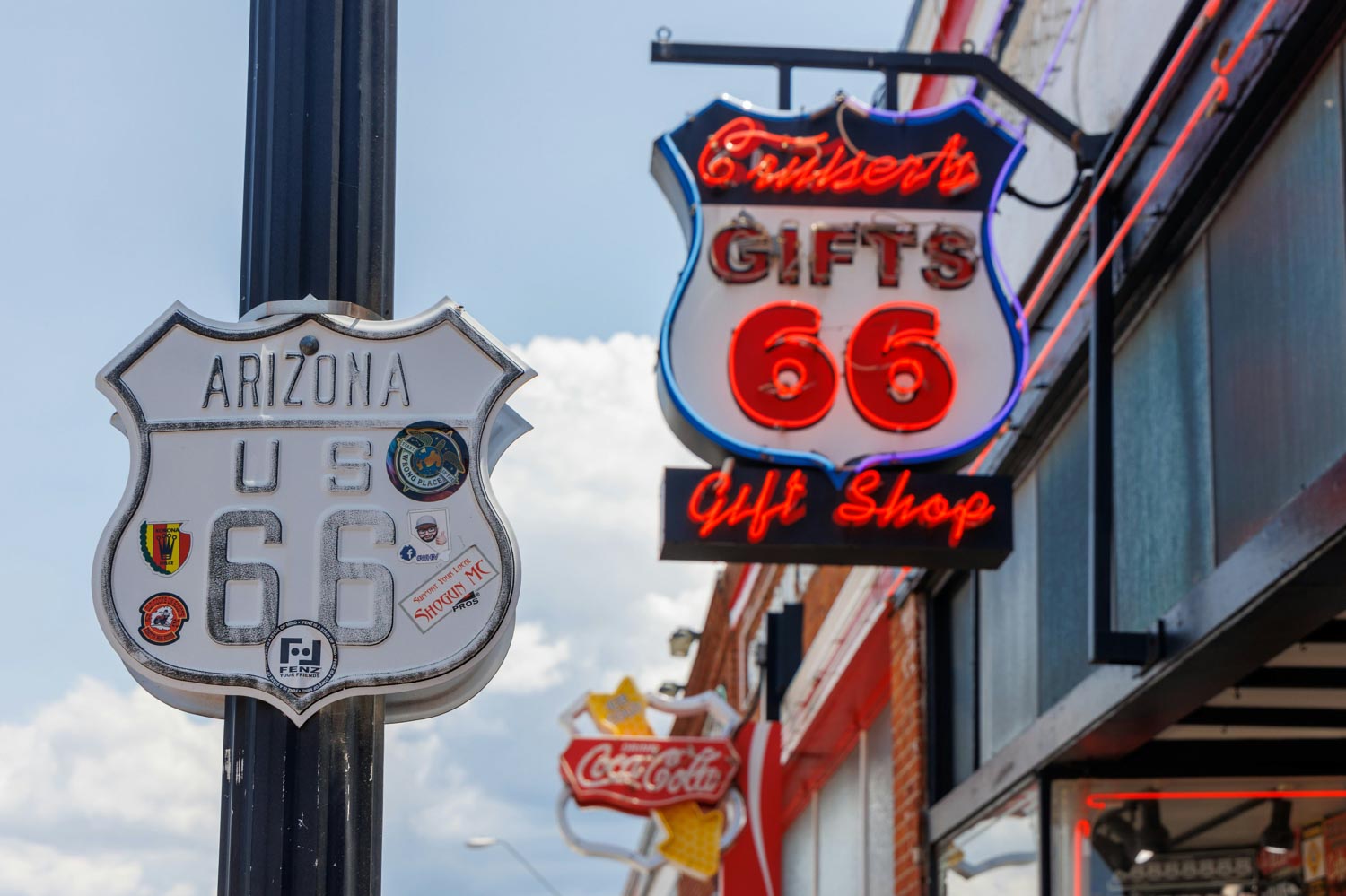
Williams is known as the “Gateway to the Grand Canyon” via the Grand Canyon Railway, and has a lot of Americana-style shops and restaurants that have been around since the early 1900s! The town has a charming main street and plenty of shops and things to do. Stop for lunch at Cruiser’s Route 66 Café, and if you’re up for it, you can explore the Route 66 Zipline and Pete’s Route 66 Gas Station Museum which features highway souvenirs.
Williams is also surrounded by seven fishing lakes and scenic trails into Sycamore Canyon. If you visit in the winter, you’ll find ski trails for both alpine and cross-country skiing. There’s plenty to do here if you’re into the outdoors!
Arriving at the Grand Canyon South Rim
When you finally arrive at the Grand Canyon South Rim, these are a few key places to know about in advance, to make your visit more enjoyable:
Main Entrance

This is where you’ll enter the Grand Canyon National Park. Located about 55 miles north of Williams, AZ, it’s the most commonly used entrance and the closest to the Grand Canyon Village. Be prepared to pay an entrance fee unless you have a park pass, and keep in mind that entrance lines can be long and wait times can reach up to 2 hours, depending on the time of year you’re visiting (peak seasons are typically spring break and summer).
You can also enter the canyon through the east entrance, which although a bit further out (23 miles east of the Grand Canyon Village) often has shorter wait times, and also offers some scenic views of the canyon along Desert View Drive.
Must-Knows
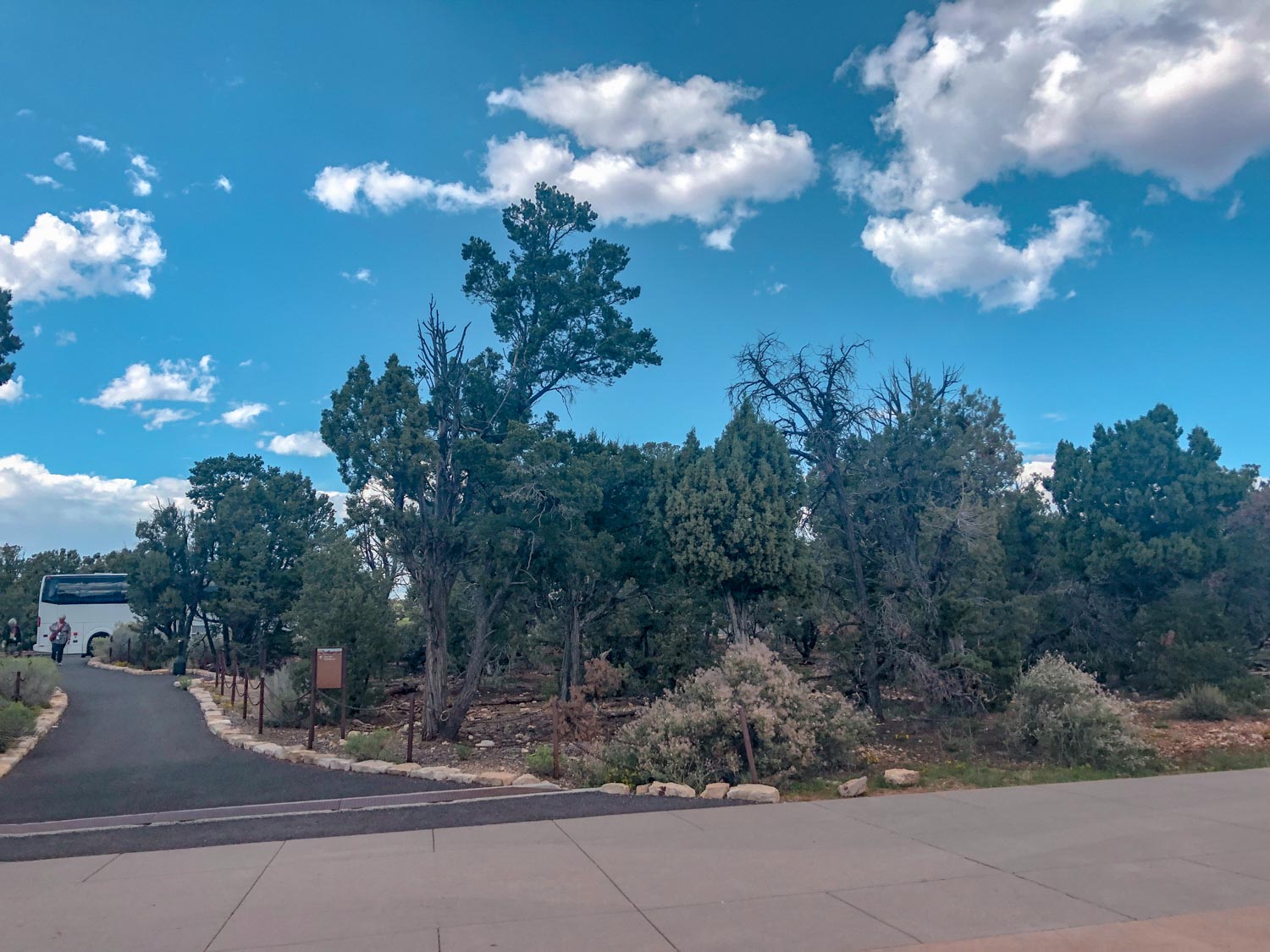
- Shuttle: The South Rim runs a free shuttle bus service to help you explore without needing to drive. Depending on the season, these buses run throughout the park and stop at major attractions, overlooks, and trailheads. For schedules and maps, visit the NPS site in advance.
- Parking: Parking can be tricky, especially during peak seasons, so plan ahead. As you drive into the Village area from the South Entrance Station, signs will direct you to the Visitor Center Plaza Parking complex. There are four main lots: Lot 1 is closest to Mather Point and has spots for RVs and trailers. Lot 2 is near the Visitor Center, Lot 3 serves as an overflow area, and Lot 4 is close to the Bike Rental Café and other amenities. If you arrive by 9 am, you’ll usually be able to snag a spot.
- Fees: The entrance fee to the Grand Canyon is $35 per private vehicle, $30 per motorcycle, and $20 for those entering by foot, shuttle, or bicycle. The fee is good for 7 days and includes access to both the South and North Rims.
Best Things to Do at the South Rim
Visit Iconic Viewpoints

The South Rim is known for its famous viewpoints like Mather Point, Yavapai Point, Grandview Point, and Hopi Point. Each offers a unique view of the canyon.
Mather Point is one of the most accessible and offers sweeping views of up to 60 miles on a clear day. It’s a fantastic spot for both sunrise and sunset. Yavapai Point gives you a closer look at the inner canyon and views of the Colorado River and Bright Angel Canyon. Grandview Point highlights the eastern part of the rim, while Hopi Point is ideal for sunset and panoramic views of the mesas across the canyon.
Also, consider climbing the 85 steps of the Desert View Watchtower for 360-degree canyon views! It’s especially magical at sunset when the rocks glow with color and create a unique “sinking ship” illusion.
Hiking Trails

For a more immersive experience, I recommend hiking some of the beautiful trails at the South Rim. Just be sure to bring plenty of water, and know that hiking into the Grand Canyon is not easy – the trails are steep, and it can be hot and dry. I recommend having some moderate training before you hike here, and even then, the Park Service doesn’t recommend hikers try to attempt the Rim to River in a day.
Bright Angel Trail is the most popular and starts near the Grand Canyon Railway Depot. It’s well-shaded, not as steep as other trails, and includes rest stops with water access. Start at Bright Angel Lodge and the Railroad Station.
If you want even more dramatic views, try the South Kaibab Trail. It’s steeper and shorter (great for the descent, but don’t try to hike up along this trail). It features landmarks like Ooh Aah Point and Skeleton Point. I recommend choosing your trail based on your time and experience level.
Explore Grand Canyon Village

Spend some time exploring the Grand Canyon Village. It’s a great place to start your visit, and it’s where most visitors head first before admiring the canyon. Here, you’ll find the Visitor Center, the Yavapai Geology Museum (which offers some of the best viewing points of the canyon), and El Tovar Hotel, where you can stay overnight. You can also find lodges, restaurants, and shops here.
The Grand Canyon Village is also a nice place to rest up before a long hike, or before walking to the different viewpoints. The Bright Angel Trail starts here.
Sunset & Stargazing

The South Rim is a certified Dark Sky Park, which makes it one of the best places in the U.S. to see the stars. If you can, stay into the evening and either attend a ranger-led night sky program or simply relax at one of the overlooks as the stars emerge.
Itinerary: 2-Day Las Vegas Grand Canyon Road Trip (Scenic Route)
Day 1: Las Vegas to Grand Canyon (South Rim)
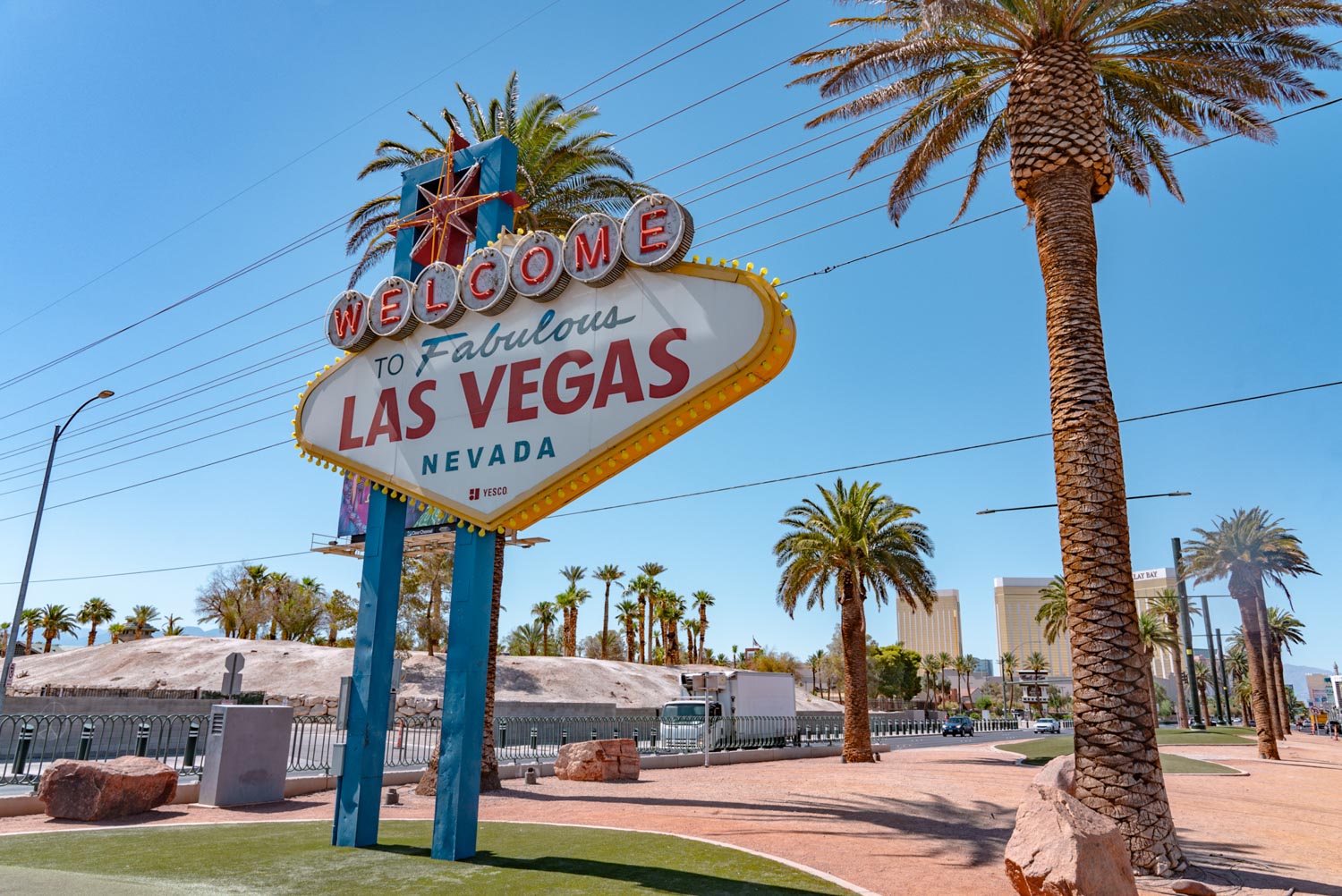

- 7:00 AM: Depart from Las Vegas
- Breakfast: Stop for breakfast on the way
- Head South on US-93 S
- Stop 1: Hoover Dam (45 min from Vegas, 30 min stop)
- Walk across the Mike O’Callaghan–Pat Tillman Memorial Bridge
- Take photos of Lake Mead & Hoover Dam
- Drive to Kingman, AZ (1 hour)
- Stop 2: Kingman & Route 66 Museum (30 min stop)
- Explore the Route 66 Museum
- Grab coffee or a snack at a 50s-style diner
- Drive to Seligman, AZ (1 hour)
- Stop 3: Seligman, AZ (30-45 min stop)
- The birthplace of Route 66 revival
- Fun souvenir shops and quirky roadside attractions
- Drive to Williams, AZ (1 hour)
- Stop 4: Williams, AZ – Gateway to the Grand Canyon (Lunch Stop, 1 hour)
- Grab lunch at Cruiser’s Route 66 Café
- Explore historic Route 66 shops
- Ride the Grand Canyon Railway (optional)
- Drive to Grand Canyon South Rim (1 hour)
- Arrive at Grand Canyon South Rim (~3:00 PM)
- Check into your lodge/hotel or campsite
- Visit the Grand Canyon Visitor Center
- Enjoy sunset at Mather Point or Hopi Point
- Stay overnight
Day 2: Explore the Grand Canyon & Return to Vegas

- 6:30 AM – Sunrise at Yaki Point
- 8:00 AM – Morning Hike
- 11:30 AM – Lunch in Grand Canyon Village
- Eat at El Tovar Dining Room or Arizona Room
- 1:00 PM – Drive Desert View Road (Optional)
- Stop at Desert View Watchtower for amazing panoramic views
- Visit Lipan Point & Moran Point
- 2:30 PM – Begin drive back to Las Vegas
- Stop in Williams or Kingman for gas/snacks
- Optional Stop: Hackberry General Store (Route 66)
- A classic Route 66 pit stop with old gas pumps & vintage cars
- 8:00 PM – Arrive back in Las Vegas
Where to Stay in the Grand Canyon
There are plenty of places to stay both inside and just outside the Grand Canyon, from cozy lodges like Bright Angel Lodge to scenic campgrounds like Mather Campground. If you prefer accommodations outside the park, nearby towns like Williams or Tusayan offer great options. Below are a few popular lodges inside the park, along with some camping options:
Lodges in the Grand Canyon
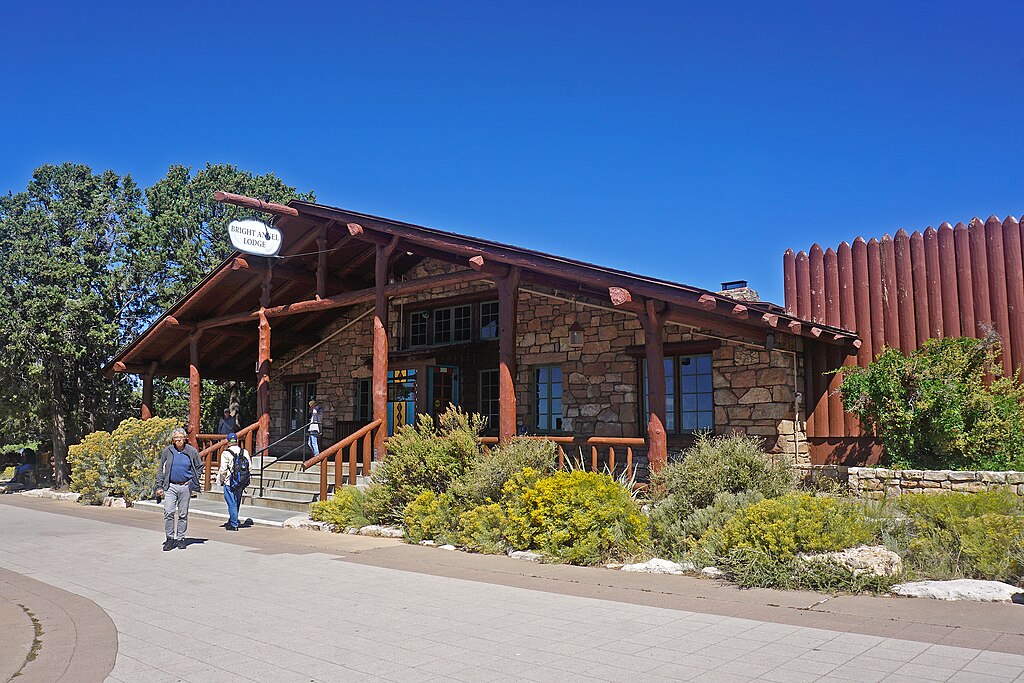
Bright Angel Lodge
The historic Bright Angel Lodge is perched right on the South Rim, giving you unbeatable views and easy access to trailheads. The rustic architecture and cabin-style rooms create a cozy atmosphere, perfect for anyone seeking a classic canyon stay.
Maswik Lodge
Tucked in a quiet pine forest, Maswik Lodge features modern, spacious rooms just a short walk from the rim. It’s more laid-back, with on-site dining options and easy access to shuttles and scenic stops.
Yavapai Lodge
Located near the visitor center and market plaza, Yavapai Lodge is a central and convenient choice. It’s family-friendly, with comfortable rooms and a laid-back tavern, which is great for unwinding after a day of exploration.
Thunderbird Lodge
Sitting right along the rim, Thunderbird Lodge offers updated rooms with partial canyon views. It’s ideal for guests wanting to be close to trails and restaurants without sacrificing comfort.
Kachina Lodge
Kachina Lodge has simple, comfortable rooms just steps from the edge of the canyon. It’s a great option for those wanting easy access to the Bright Angel Trail and nearby village amenities.
El Tovar Hotel
Located in the Grand Canyon Village, El Tovar Hotel is a rustic setting with breathtaking views of the Grand Canyon because it’s directly on the canyon rim! The rooms are a little old school, but the views from and service in this historic hotel make it a classic.
Camping Options in the Grand Canyon
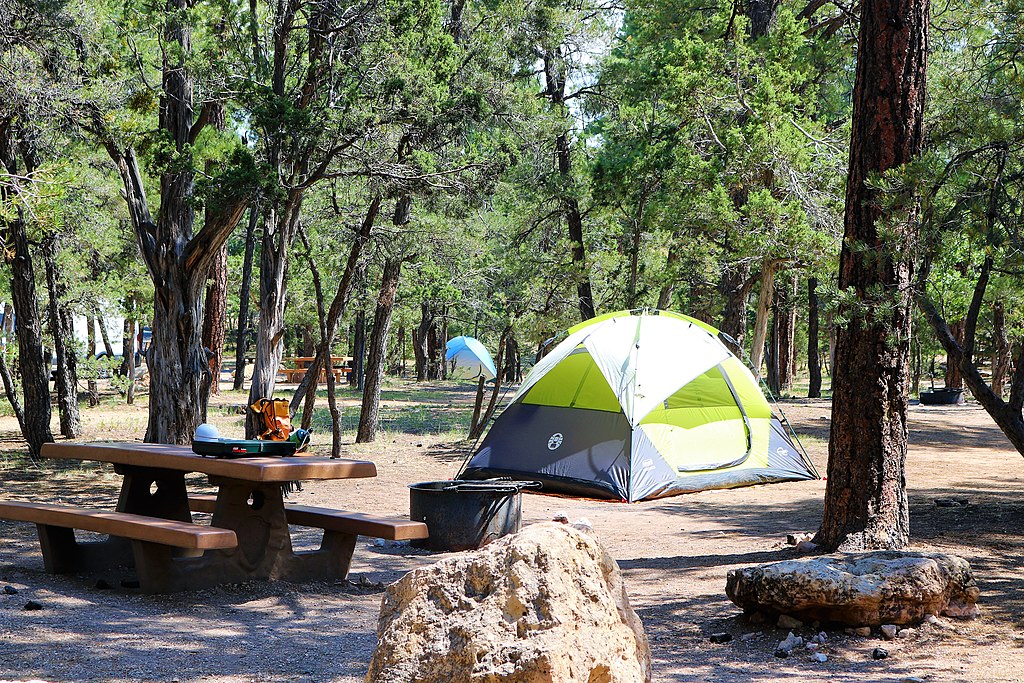
Mather Campground
Mather Campground is a popular choice for people who want to camp in a tent. There are 327 campsites equipped with picnic tables, fire rings, and plenty of space for up to three tents.
It’s located within walking distance of the South Rim and provides easy access to hiking trails, shuttle buses, and visitor services. The campground is open year-round, but I recommend reserving in advance, especially during busy months.
Trailer Village RV Park
Trailer Village RV Park is the only RV campground within Grand Canyon National Park that offers full hookups. The paved sites can accommodate vehicles up to 50 feet long and are just minutes from the South Rim.
Shuttle service is available from the park, and while there are amenities like showers and laundry, note that they may be a short walk from some campsites.
Desert View Campground
About 23 miles east of the South Rim, Desert View Campground is a quieter alternative with 50 sites in a single loop. It’s an excellent choice for stargazing and photography, with gorgeous views of the Grand Canyon and Painted Desert.
Nearby attractions like the Desert View Watchtower and Tusayan Ruins make it a unique and scenic stay.
Essential & Safety Tips for a Smooth Road Trip & Hikes
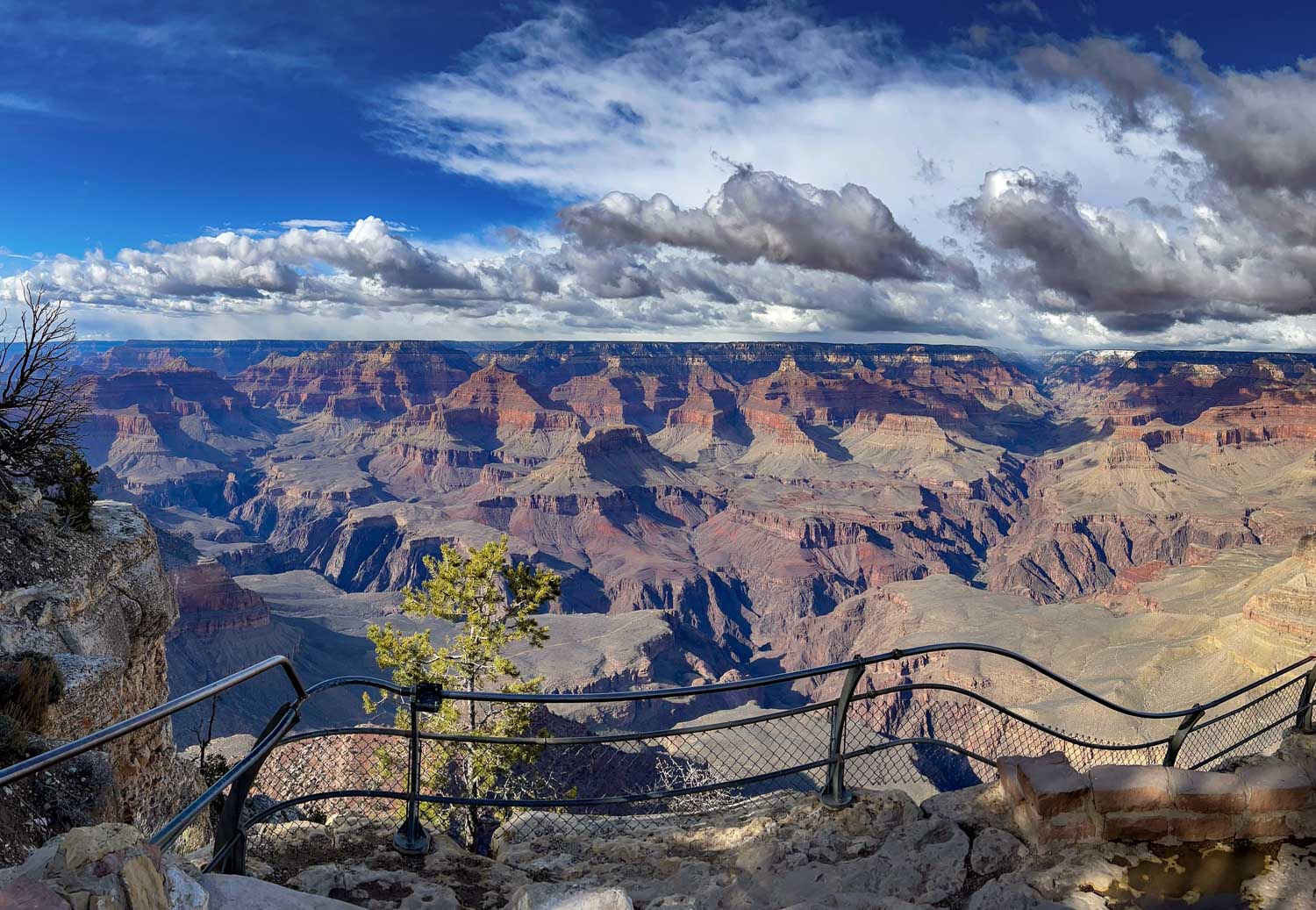
Before heading out, make sure to pack enough water, snacks, and a first-aid kit. Wear sturdy shoes for hiking, and always check trail conditions before hitting the trails. Also, if you’re traveling from Las Vegas to Grand Canyon by car, make sure it’s all set.
If you’re hiking, do not attempt Rim to River in a day! Be sure to check online and read reviews of several hiking trails before you go. Do your research beforehand and choose hikes that match your skill level. If you’re a beginner like I am, stick with easier trails or enjoy the canyon from its amazing viewpoints.
Conclusion
The road trip from Las Vegas to the Grand Canyon South Rim is a memorable adventure filled with desert landscapes, breathtaking views, and peaceful moments in nature.
It’s a great way to explore the American Southwest, with iconic stops like the Hoover Dam and quirky roadside towns along the famous Route 66.
Pack your car, hit the road, and enjoy your journey to one of the world’s greatest natural wonders. Happy travels!

About the Author
Sasha is the founder of Little Happy Travels, a blog with tips and inspiration for combining work + travel and living the digital nomad lifestyle. As a business coach and remote worker, she’s spent the last few years traveling the world while helping others do the same. Follow for guides, tips, and personal stories on working from anywhere!


